
The Strategic Alpha Engine: Brand Fortification
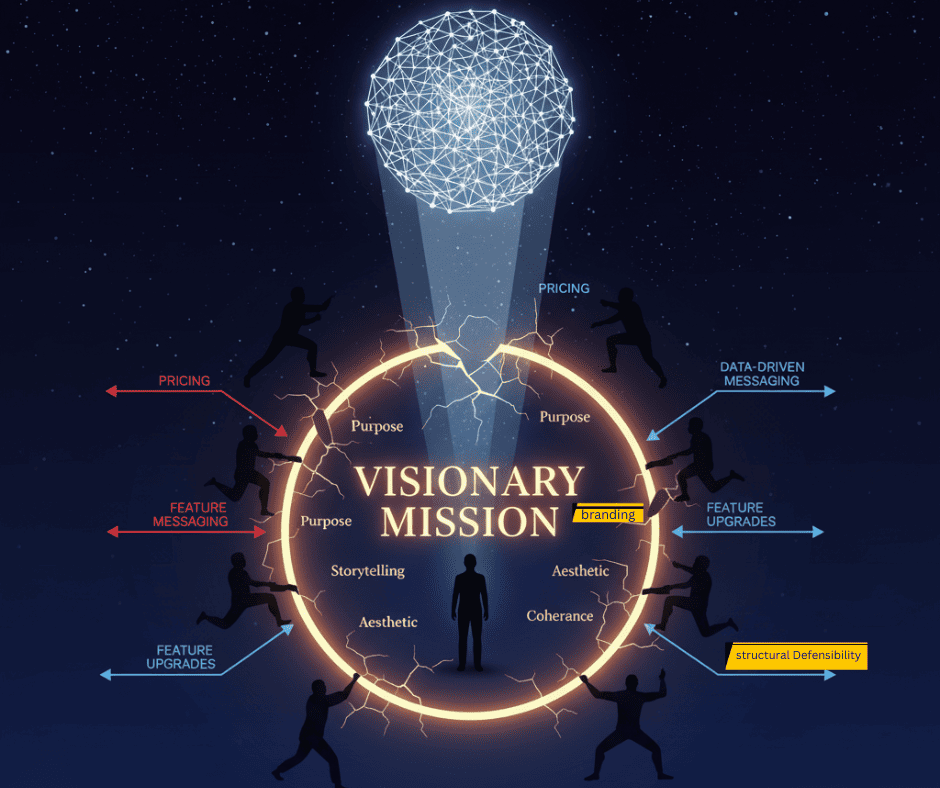
The Definitive Diagnosis: The Narrative-as-Defense Delusion
Traditional brand consulting operates on a catastrophic strategic fallacy: the belief that compelling narrative and aesthetic coherence constitute defensible competitive advantage. Legacy firms invest millions in brand positioning workshops, visual identity systems, and storytelling frameworks while treating brand as a marketing artifact disconnected from the structural architecture of the business. This is the Narrative-as-Defense Delusion—the assumption that customer perception alone creates barriers to competitive displacement. The result is predictably catastrophic: brands with high awareness and positive sentiment experience customer defection the moment a competitor offers marginally superior pricing or features, revealing that perceived brand strength provided zero structural defensibility.
The fundamental error is ontological. Traditional branding treats brand value as a psychological construct maintained through consistent messaging and aesthetic presentation. This approach fails because psychology without structural reinforcement creates no switching costs, no lock-in mechanisms, and no compounding value delivery that increases with customer tenure. A competitor can replicate the emotional positioning, reverse-engineer the aesthetic language, and deploy equivalent or superior storytelling while offering better unit economics—and the “strong brand” provides no protection whatsoever. Customer loyalty proves to be a narrative illusion masking transactional relationships vulnerable to immediate arbitrage.
The pathology manifests most visibly in the gap between brand promise and brand moat. Founders confuse customer affinity with customer captivity, mistaking positive sentiment for structural lock-in. A customer who “loves” your brand but faces zero friction in switching to a competitor is not a brand asset—they are a liability awaiting activation by competitive arbitrage. Traditional brand consultancies cannot address this vulnerability because they lack the technical and operational expertise to hard-code brand value into business architecture. They produce brand guidelines and messaging platforms while the actual sources of structural defensibility—proprietary data accumulation, switching cost engineering, ecosystem dependencies—remain unaddressed or delegated to separate functional teams with no brand integration mandate.
Brand Fortification at Elevion eliminates this structural deficiency through Brand Moat Engineering—the systematic embedding of brand value into the technical, operational, and economic architecture of the business to create Replication Friction and structural switching costs. This is not brand strategy or identity design; it is the transformation of brand from marketing asset into competitive weapon through the engineering of defensibility mechanisms that make customer defection economically irrational, operationally complex, or psychologically costly. Brand transitions from story to structure, from narrative to moat, from aesthetic preference to strategic barrier that compounds in strength with every customer interaction and data accumulation cycle.
The Elevion Methodology: Brand Fortification as a Systemic Advantage
Our Brand Fortification capability operates as a defensibility engineering system that transforms brand equity from transient perception into durable competitive advantage. This methodology ensures brand value creates quantifiable barriers to competitive displacement and measurable pricing power:
Inputs: Causal Analysis of Customer Switching Costs
- Forensic audit of existing customer relationships to identify which brand attributes, service elements, or product features actually influence retention decisions versus those that merely correlate with positive sentiment but possess zero causal impact on switching behavior
- Behavioral economics analysis revealing the psychological, economic, and operational factors that create genuine switching costs—data portability friction, learning curve investments, ecosystem integration dependencies, social proof accumulation, customization value—versus superficial loyalty drivers that evaporate under competitive pressure
- Competitive vulnerability mapping that identifies which elements of customer experience can be easily replicated by rivals versus those that require significant capital investment, technical sophistication, or temporal accumulation to reproduce
- Customer lifetime value decomposition separating the economic contribution of brand premium (willingness to pay above commodity pricing) from other value drivers, revealing the true financial impact of brand strength versus the illusion created by conflating brand with product quality or service excellence
- Causal identification of which brand touchpoints and experiential elements actually drive customer advocacy, referral behavior, and organic acquisition versus those that consume resources without generating compound returns through network effects or word-of-mouth velocity
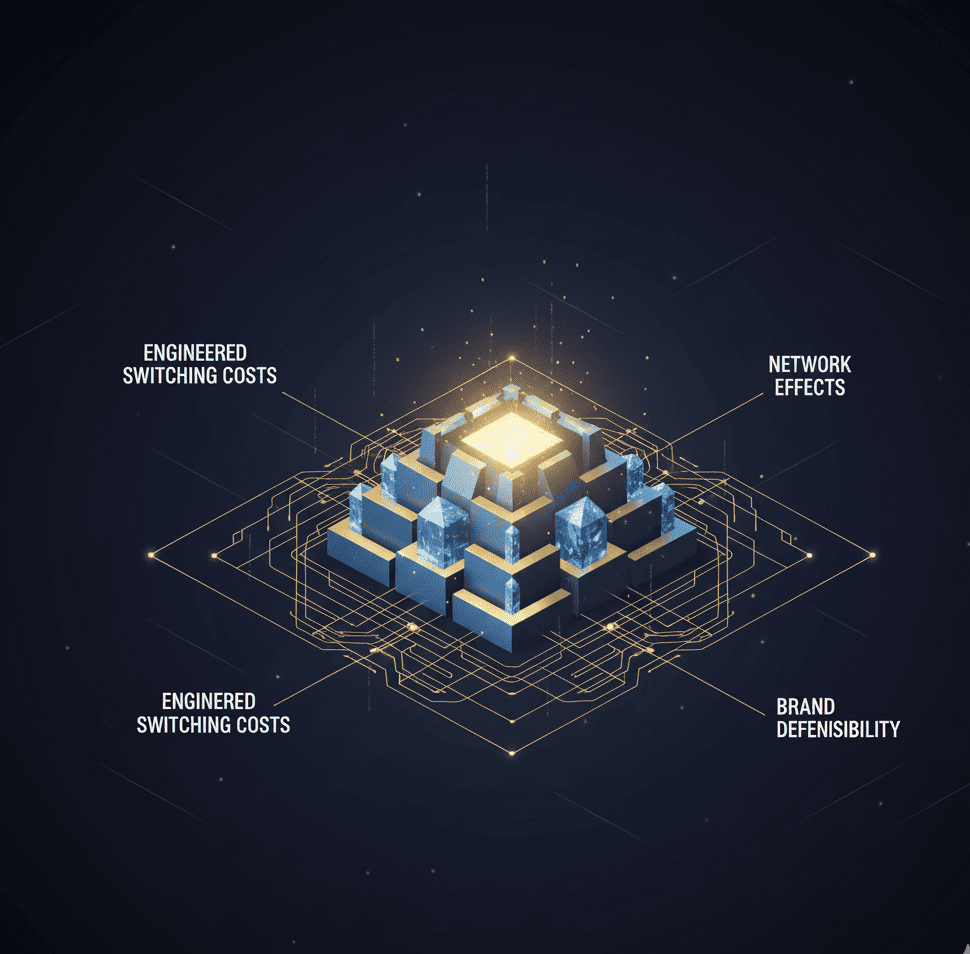
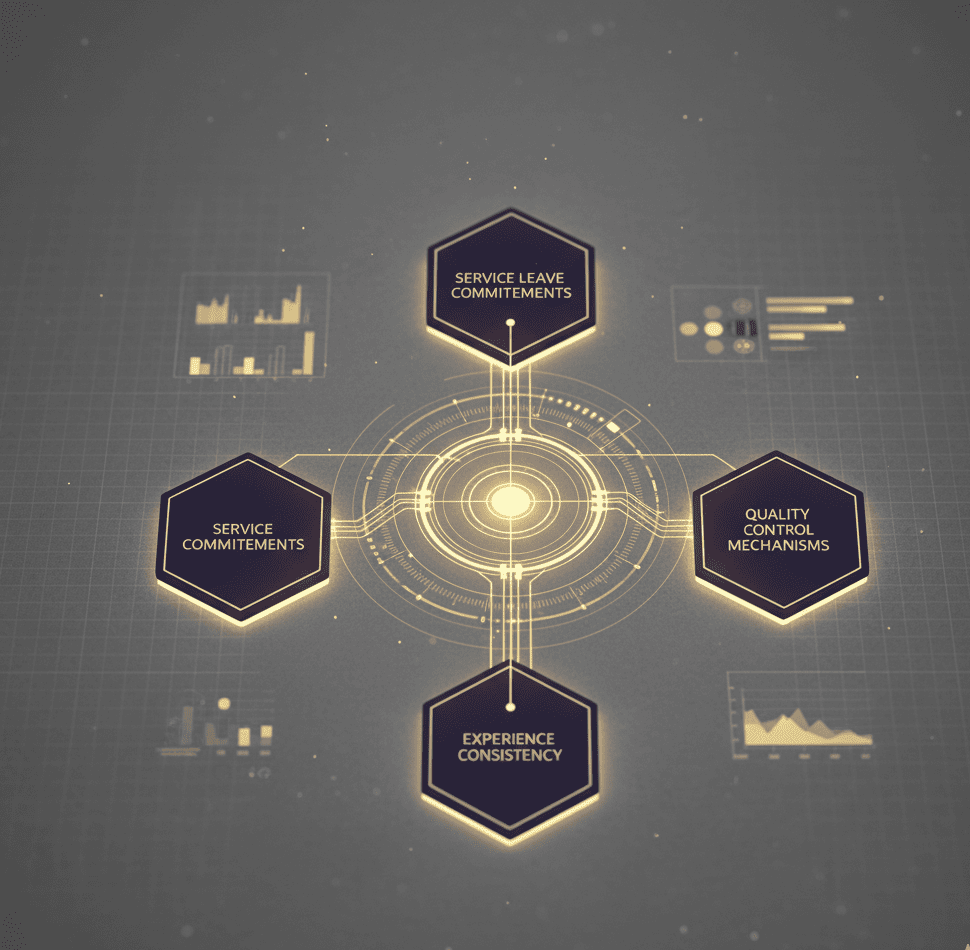
Process: Brand Moat Engineering (Hard-Coding Value Into the Tech Stack/Operations)
- Systematic encoding of brand differentiation into proprietary technology infrastructure: custom algorithms that personalize experiences in ways competitors cannot replicate, data accumulation loops that improve service quality with usage tenure, and platform architectures that create ecosystem lock-in through third-party integrations
- Operational protocol design that transforms brand promise from aspiration into guaranteed delivery through systematized quality controls, service level commitments backed by operational infrastructure, and experience consistency mechanisms that function independently of individual employee performance
- Switching cost engineering through strategic introduction of friction points that make customer migration economically or operationally costly: proprietary data formats that complicate portability, integration dependencies that require technical re-implementation, accumulated customization that cannot transfer to competitor platforms
- Network effect architecture that increases brand value proportionally with customer base growth: community features that create social switching costs, marketplace dynamics that improve with liquidity, and data network effects where service quality compounds through aggregate usage patterns
- Brand value quantification systems that measure the specific economic contribution of brand moat elements: price premium sustainability testing, churn rate correlation with brand touchpoint exposure, customer acquisition cost reduction attributable to brand awareness and advocacy
Output: Pricing Power Moats and Quantifiable LTV Protection
Demonstrated Pricing Power through quantified ability to maintain premium pricing without customer defection: A/B testing validates that brand equity justifies price premiums, competitive displacement attempts fail due to structural switching costs rather than price matching
Quantifiable LTV Protection where brand moat engineering creates measurable improvements in customer retention curves, lifetime value trajectories, and cohort economics that compound over time as switching costs accumulate with customer tenure
Replication Friction that converts brand from aesthetic asset into structural barrier: competitors attempting to replicate positioning discover they cannot reproduce the experience without equivalent operational sophistication, technical infrastructure, and temporal data accumulation
Compounding brand equity where each customer interaction strengthens defensibility through data accumulation, network effect contribution, customization deepening, or ecosystem integration—creating exponential rather than linear returns on brand investment
Strategic insulation from competitive arbitrage: margin resilience during price wars, customer retention during aggressive competitor acquisition campaigns, and sustained premium positioning despite commodity alternatives entering the market
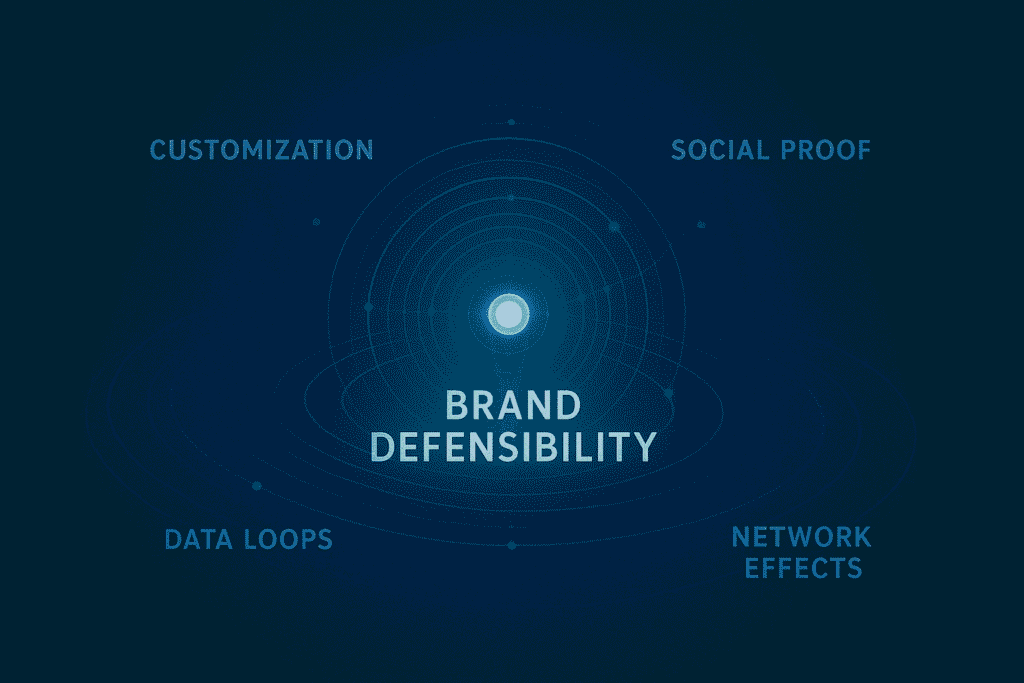
The System Linkage (The Integration Moat)
Brand Fortification generates structural defensibility only when integrated with the full Elevion system—isolated brand strategy, even technically sophisticated, fails to create durable competitive advantage when disconnected from strategic intelligence, operational delivery, and market execution. The integration creates compounding defensibility that fragmented brand consulting cannot achieve.
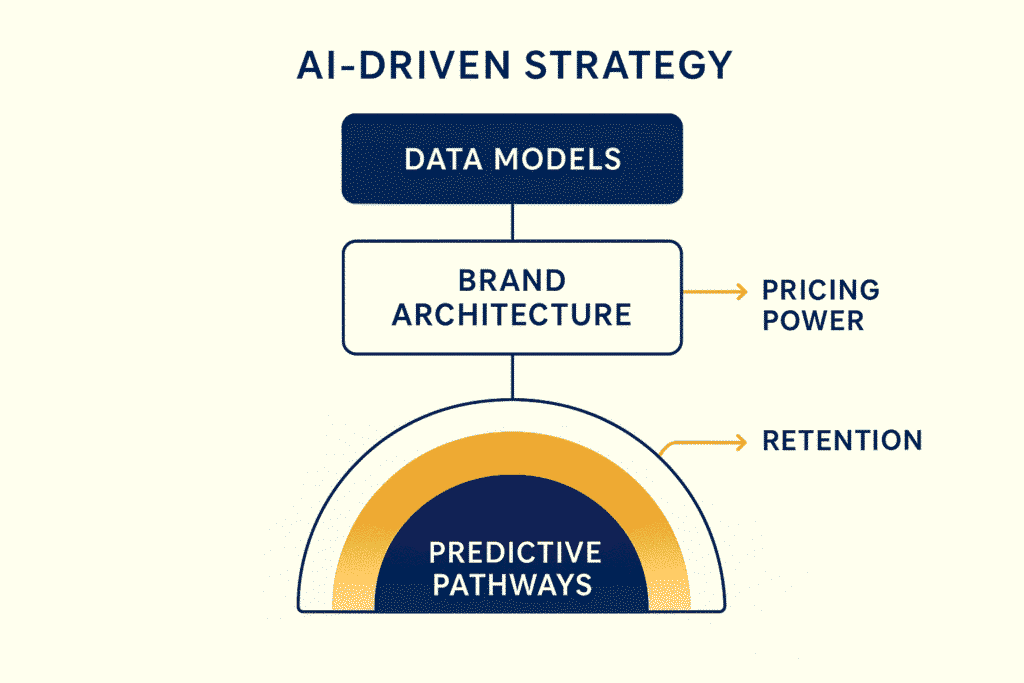
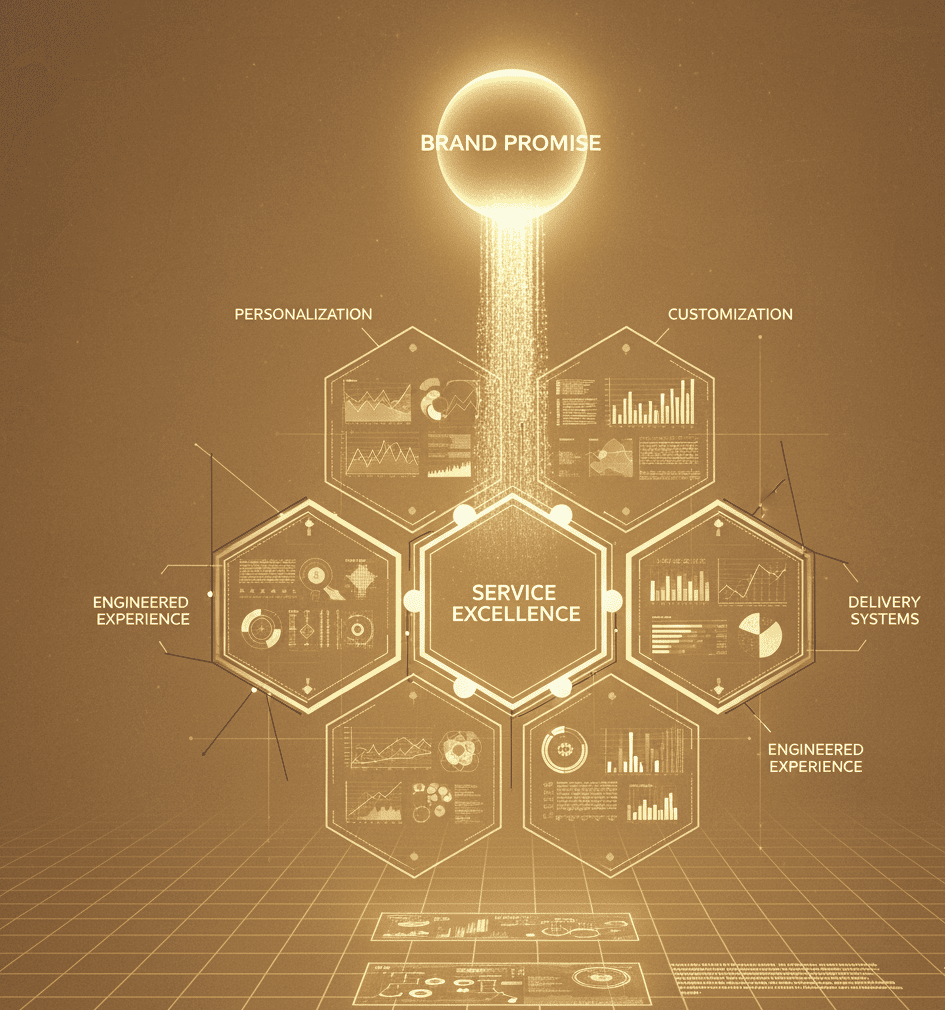
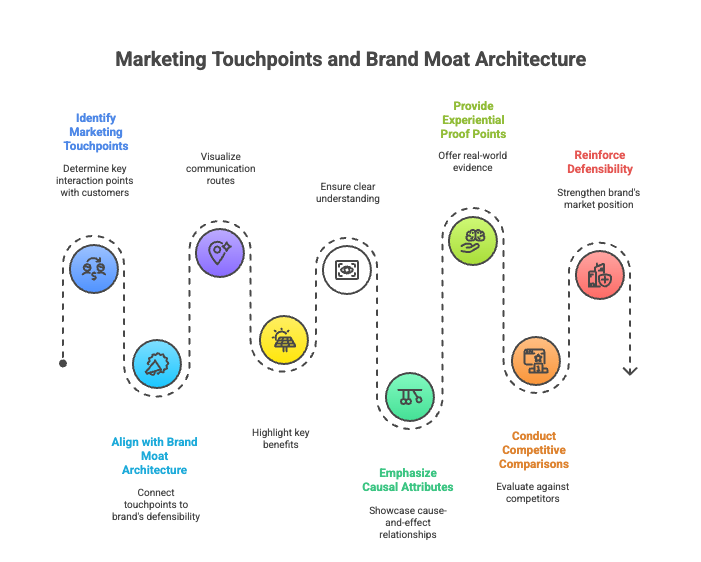
This capability must be informed by AI-Driven Strategy to identify the right defensible value attributes. Traditional brand positioning emerges from qualitative research and competitive differentiation workshops that identify perceived gaps in market positioning—but perception gaps without causal validation may represent opportunities competitors deliberately avoid due to unfavorable economics or customer segments with negative lifetime value. Our Brand Fortification methodology is guided by causal inference models from AI-Driven Strategy that identify which brand attributes possess genuine causal efficacy in driving pricing power, customer retention, and lifetime value maximization.
This prevents the catastrophic error of building brand architecture around differentiation that customers claim to value in research but ignore in actual purchase decisions, or worse, around positioning that attracts unprofitable customer segments. The AI’s predictive models also identify which brand attributes will increase in strategic importance as markets evolve, ensuring brand architecture remains defensible through competitive regime changes rather than optimizing for current conditions that will obsolete.
Brand Fortification enables Operational Alpha by clarifying which experiences must be flawless and systematized. Brand promise creates customer expectation; operational delivery determines whether that expectation is fulfilled or violated. Our Brand Fortification methodology specifies the precise experience elements, quality thresholds, and service protocols that must be encoded into operational systems to ensure brand promise translates into brand moat. This integration eliminates the common failure mode where compelling brand positioning creates elevated expectations that inconsistent operational delivery fails to meet, resulting in negative brand equity through promise-reality gaps. Instead, operational systematization is explicitly designed to deliver the differentiated experiences that create structural switching costs: the personalization that requires data accumulation, the service excellence that demands operational sophistication, the customization that necessitates technical infrastructure. Brand and operations become mutually reinforcing rather than independently managed.
The capability is the structural input for Digital Marketing Execution, ensuring every message reinforces the brand moat. Marketing execution achieves compounding returns only when messaging systematically directs customer attention toward the specific brand attributes that create structural defensibility rather than generic differentiation claims competitors can neutralize. Our Brand Fortification architecture provides the explicit blueprint for marketing execution: which value propositions to emphasize, which experiential elements to showcase, which competitive comparisons to highlight, and which customer proof points to amplify. This ensures marketing spend compounds brand moat strength rather than dissipating across messaging that generates awareness without defensibility. Every marketing touchpoint becomes a mechanism for communicating and reinforcing the structural advantages that justify pricing power and create switching costs, transforming marketing from cost center into brand equity compounding engine.
The integration moat is architectural: Brand Fortification creates durable competitive advantage only when strategic causality, operational delivery, and marketing execution operate as a unified defensibility system. Fragmenting brand strategy, operational excellence, and marketing across disconnected teams or vendors guarantees suboptimal outcomes—brand positioning that sounds compelling but lacks operational delivery capability, or marketing that generates awareness for value propositions with no structural defensibility.
Engage the System
The most dangerous brand delusion is mistaking customer affinity for competitive defensibility. Positive brand sentiment, high awareness, and strong recall mean nothing if those perceptions fail to translate into structural barriers that prevent customer defection under competitive pressure. Traditional brand consulting cannot solve this problem because it treats brand as a perceptual and aesthetic challenge rather than an architectural one—they produce compelling stories and visual systems while the actual mechanisms of defensibility remain unengineered. The result is brands that appear strong in awareness studies while possessing zero pricing power, minimal customer retention advantage, and complete vulnerability to competitive arbitrage.
Structural defensibility requires systematic engineering of brand value into the technical, operational, and economic architecture of the business—this engineering cannot be achieved through messaging refinement or visual identity evolution. Every quarter you operate with brand as narrative rather than moat is a quarter your competitors potentially gain irreversible structural advantages through superior defensibility engineering. Every customer relationship maintained through brand affinity alone rather than structural switching costs is a relationship vulnerable to immediate competitive displacement through marginal improvements in pricing or features.
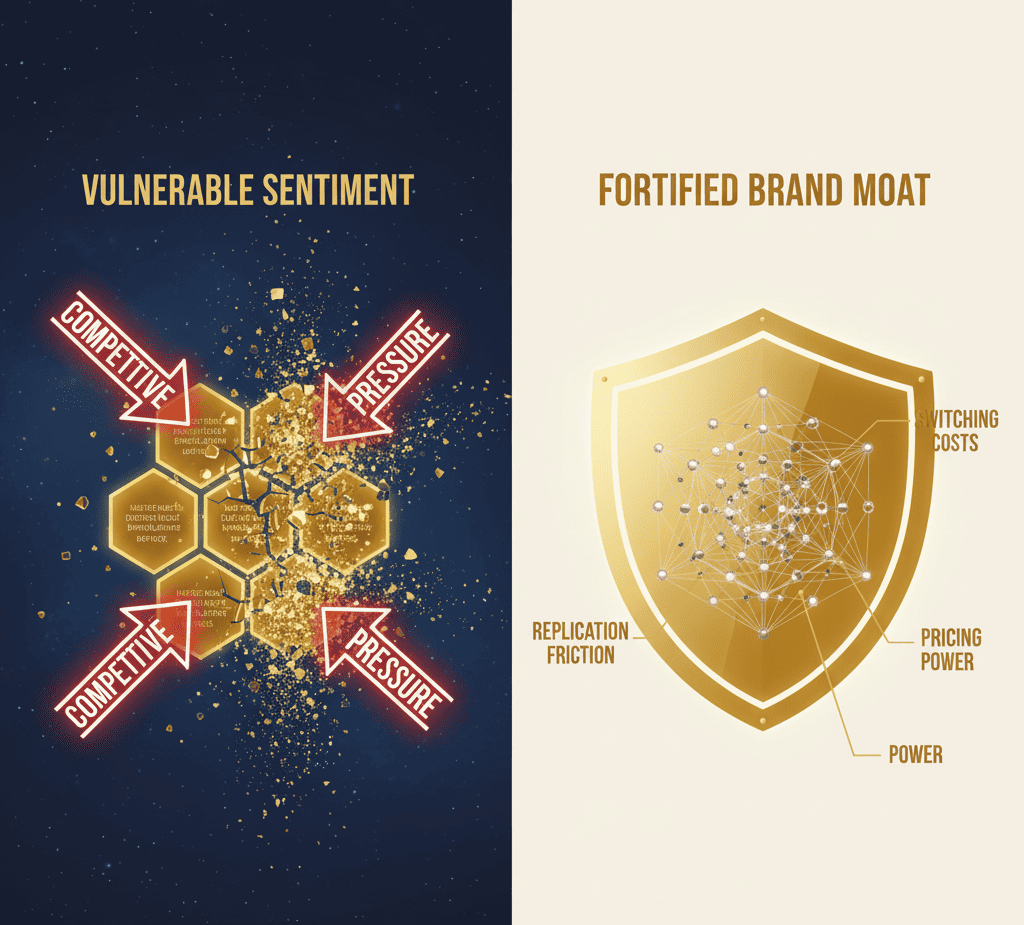
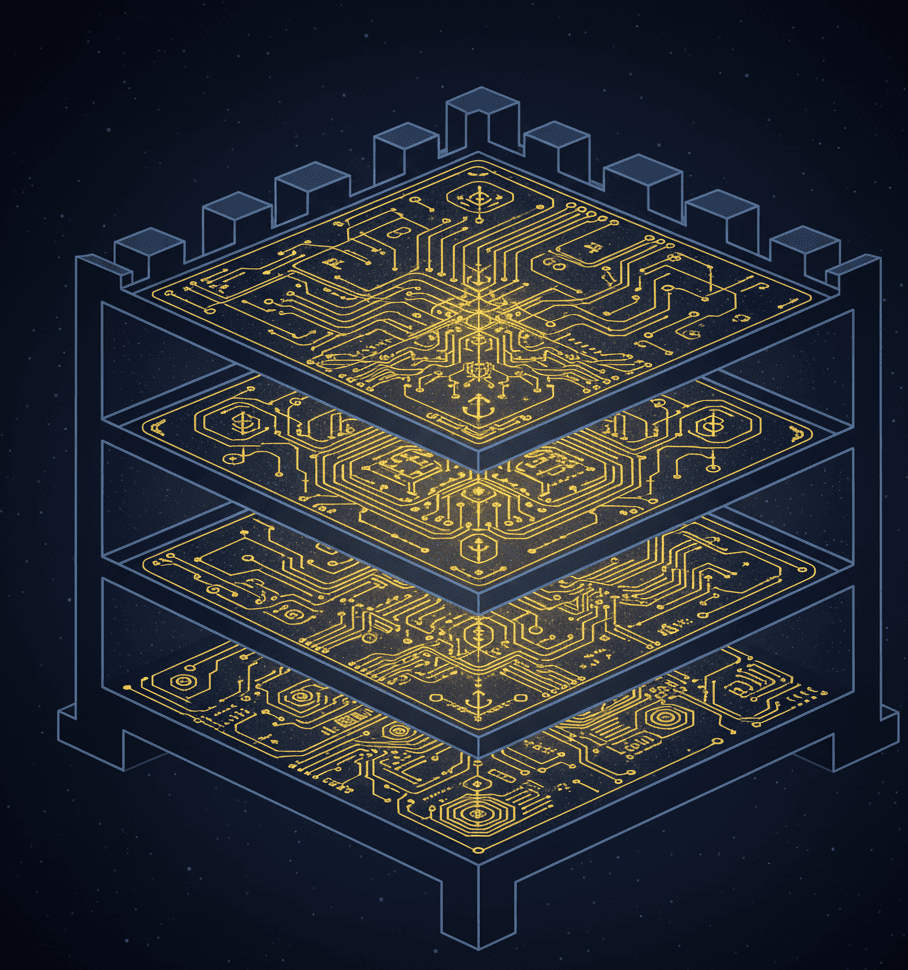
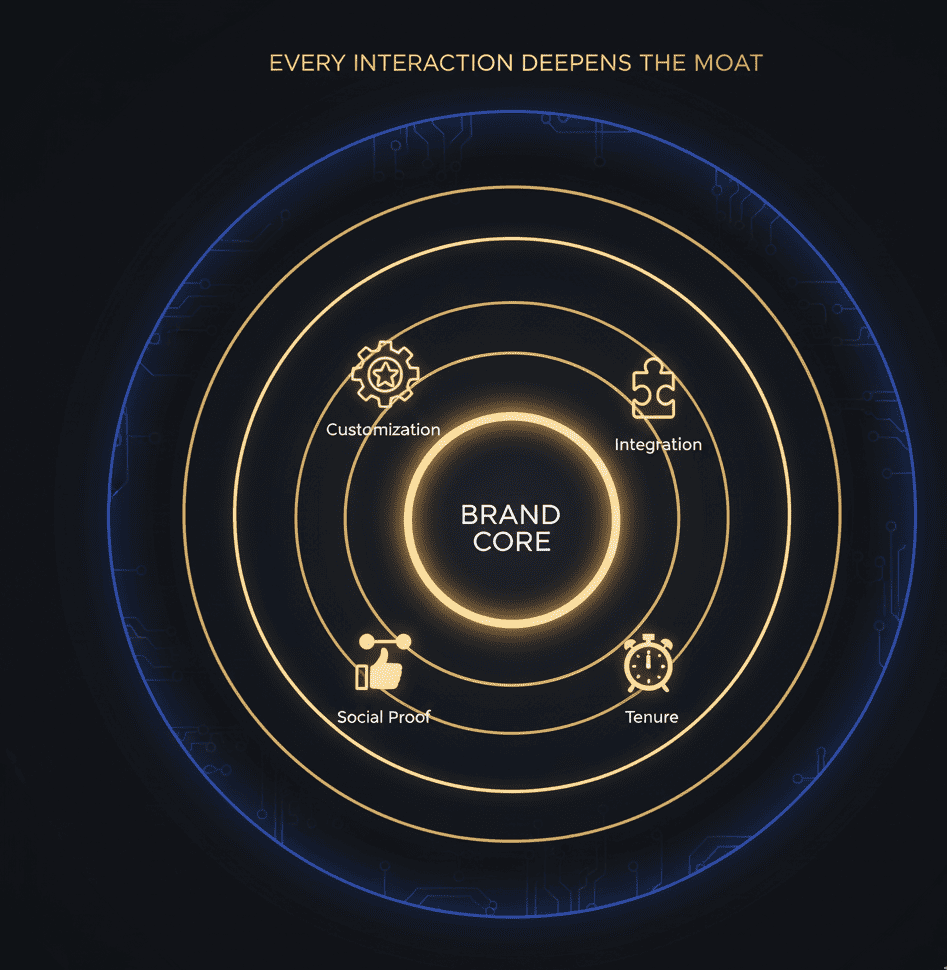
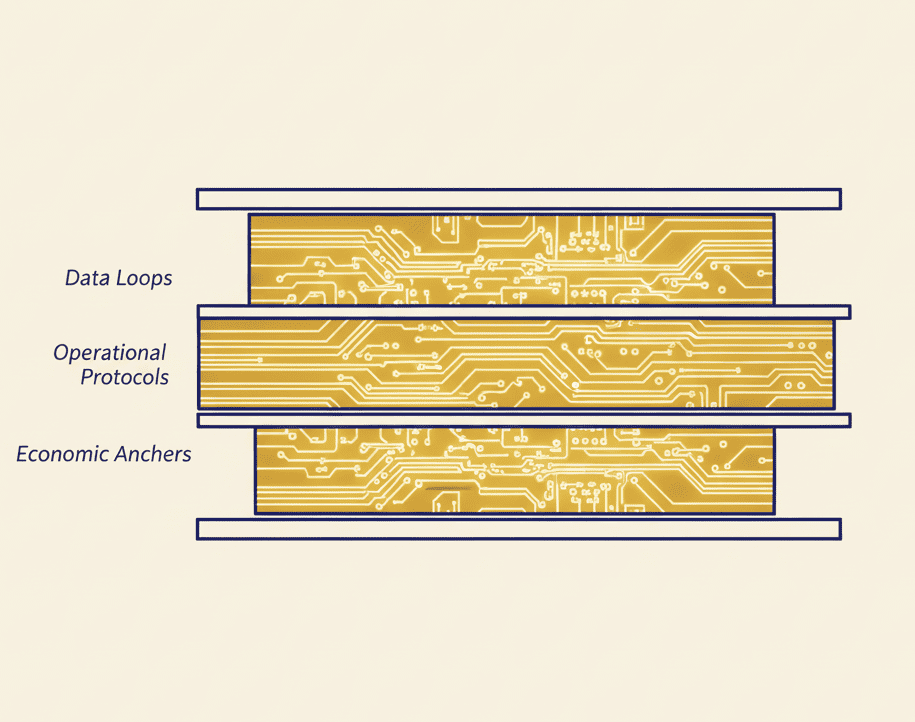
The founders achieving durable pricing power and customer lifetime value protection are not those with the most creative brand narratives or sophisticated visual identities—they are those who engineer brand moat through systematic embedding of defensibility mechanisms into business architecture. Brand Fortification is not brand strategy—it is the transformation of brand from marketing artifact into competitive weapon through the creation of Replication Friction, switching cost accumulation, and compounding value delivery that increases customer captivity with every interaction. The question is not whether you have a strong brand—it is whether that brand creates quantifiable structural barriers to competitive displacement, or whether it remains a narrative illusion that will dissolve the moment a competitor offers superior economics or features.